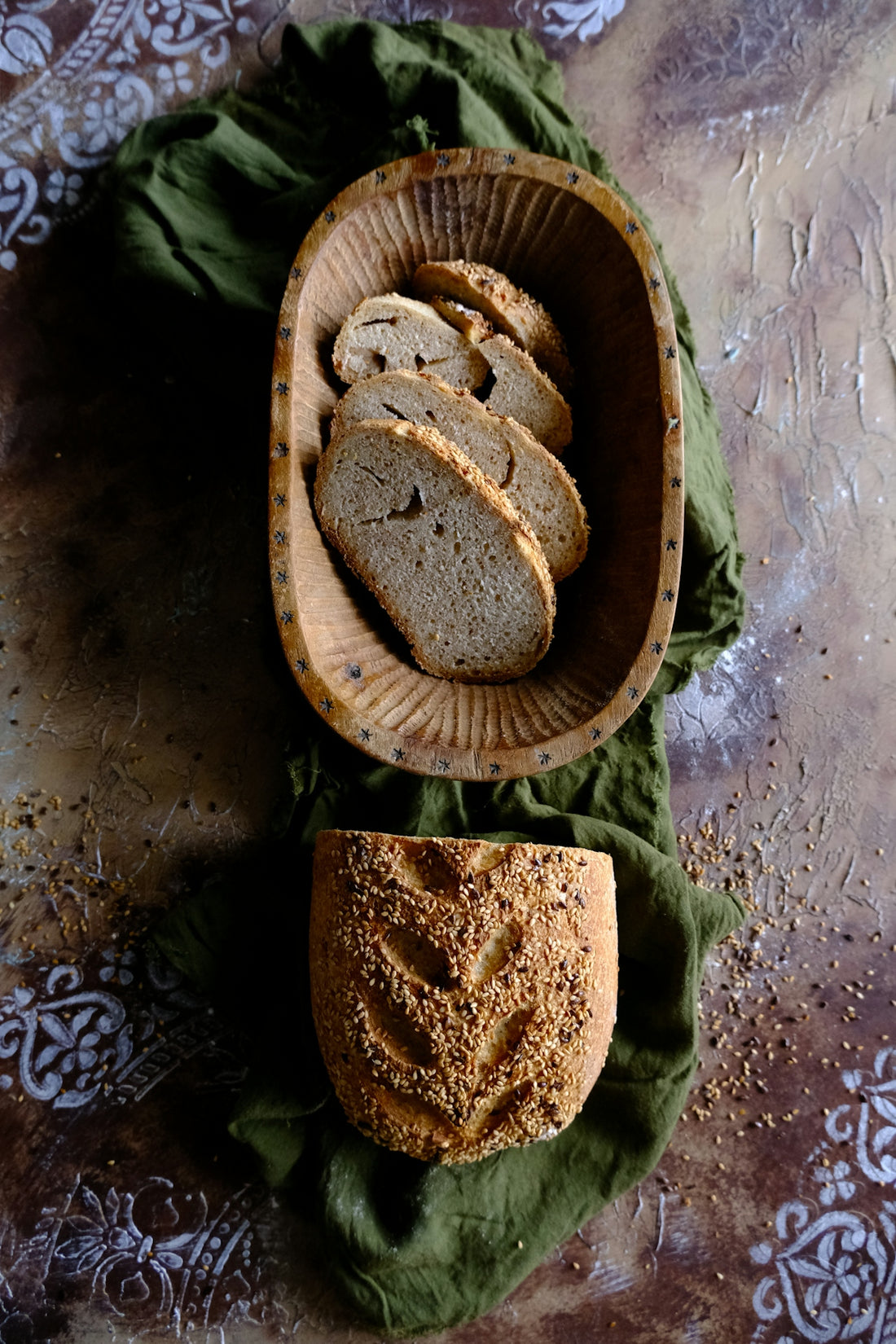
Easy Sourdough Bread Recipes: A World of Tastes and Textures
Sourdough bread has a special place in the heart of baking enthusiasts worldwide. From its naturally leavened goodness to its irresistible tang, it evokes a rustic charm that's hard to resist. Whether you're a novice baker or an experienced artisan seeking new techniques, this blog post aims to guide you through the delightful world of sourdough bread, offering easy recipes, tips, and insights to enhance your sourdough journey.
The Art of Sourdough
The magic of sourdough bread lies in its fermentation process. Unlike conventional yeasted bread, sourdough relies on a sourdough starter, an active culture of wild yeast and lactic acid bacteria. This starter ferments the dough, imparting a unique flavor and improved digestibility, making it a great option for those with digestive sensitivities.
Benefits of Sourdough Fermentation
Sourdough fermentation offers numerous benefits, including:
- Enhanced Nutrition: Fermentation breaks down phytic acid, increasing mineral absorption.
- Lower Glycemic Index: A boon for those monitoring blood sugar levels, making sourdough for diabetics a viable option.
- Better Digestibility: Wild yeast fermentation can render gluten less confrontational for some.
Getting Started with Sourdough
The journey begins with understanding how to work with your sourdough starter. This living entity needs nurturing—much like a friendly pet. Here’s how you can maintain a thriving starter:
How to Feed Sourdough Starter
- Feeding Schedule: Regular feeding depends on usage, but a typical schedule involves discarding half of the starter and replenishing it with equal parts flour and water every 12-24 hours.
- Flour Variety: Use all-purpose or whole grain flours for a robust starter.
- Storage: Keep your starter at room temperature for frequent use or refrigerated for less frequent baking.
For a more detailed guide, check out How to Feed Sourdough Starter.
Sourdough Maintenance Tips
- Troubleshooting: If your starter is sluggish, adjust feeding quantities or try different temperature conditions.
- Storage: Learn how to store sourdough starter for long-term sustainability.
Easy Sourdough Bread Recipes
Let's delve into some easy sourdough bread recipes that will enrich your baking repertoire:
Classic Sourdough Bread Recipe
Ingredients:
- 500g strong bread flour
- 320g water
- 90g active sourdough starter
- 10g salt
Instructions:
- Mix: Combine flour, water, and starter. Autolyse for 30 minutes.
- Add Salt: Incorporate salt and knead until dough is smooth.
- Bulk Fermentation: Let the dough rest in a covered bowl for 4 hours, stretching and folding every 30 minutes.
- Shape: Form the dough into a round shape using best sourdough shaping techniques.
- Final Proof: Place the dough in a well-floured proofing basket for 2-3 hours.
- Bake: Preheat the oven with a Martha Stewart 7Qt Enameled Cast Iron Dutch Oven. Score the dough using a Bread Lame Dough Score and bake covered for 20 minutes, then uncover and bake for 25 minutes more until golden brown.
Sourdough Pizza Dough
Your sourdough starter can also transform homemade pizzas. Here’s how:
Ingredients:
- 500g bread flour
- 325g water
- 100g sourdough starter
- 10g salt
- 10g olive oil
Instructions:
- Mix: Combine flour, water, and starter, then rest for 30 minutes.
- Add Salt and Oil: Mix in salt and olive oil.
- Ferment: Rest dough for 4-5 hours, performing stretch and folds.
- Shape: On a floured surface, divide and shape dough into balls.
- Proof: Let rise for another 2 hours.
- Bake: Stretch dough over a Nonna Bella's Bamboo Pizza Board and bake in the oven at 475°F until crust is crispy.
Sourdough Bagels
For breakfast or brunch, why not try sourdough bagels?
Ingredients:
- 500g bread flour
- 270g water
- 100g active sourdough starter
- 10g salt
- 1 tbsp honey
Instructions:
- Combine: Mix all ingredients and knead until smooth.
- Bulk Fermentation: Let rise in a warm place for 4-6 hours.
- Shape: Divide the dough into pieces, shape into bagels.
- Boil & Bake: Boil each bagel for 30 seconds per side, then bake at 425°F for 15-20 minutes.
Sourdough Baking Tips
- Crispy Crust: Steam during baking can enhance crust texture. Use a baking stone for added thermal mass.
- Best Scoring Techniques: Use a sharp blade and swift motion for clean cuts.
- Tools Needed: A digital scale, proofing basket, and a reliable oven thermometer are essential for precision in artisan bread baking.
Sourdough vs Regular Bread
While regular bread relies on commercial yeast for fermentation, sourdough uses a natural process. This not only improves nutritional content but offers a wider range of flavors. Moreover, sourdough's longer fermentation time contributes to its complex and nuanced taste profile.
Maintaining Sourdough for Longevity
- Starter Longevity: An organic sourdough starter with a long legacy can yield superior flavors.
- Troubleshooting Starter: Address issues like mold by keeping conditions clean and stable.
- Feeding and Maintenance: Keep a consistent routine, especially if your baking frequency is high.
Conclusion
With these easy sourdough bread recipes and tips, you're equipped to start or elevate your doughy adventures. To support your passion, consider the tools that enhance the baking experience, such as the Nonna Bella Carbon Steel Bread & Loaf Pans or the Bread Lame Dough Score.
Discover more delightful ways to bake sourdough and related goods by visiting Italian Sourdough. Happy baking!
